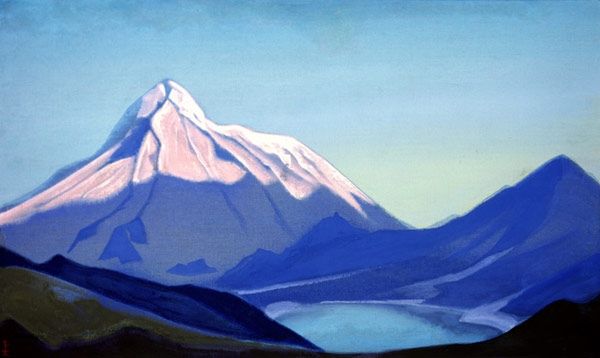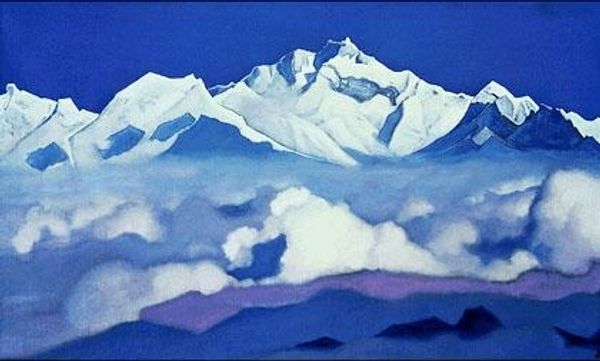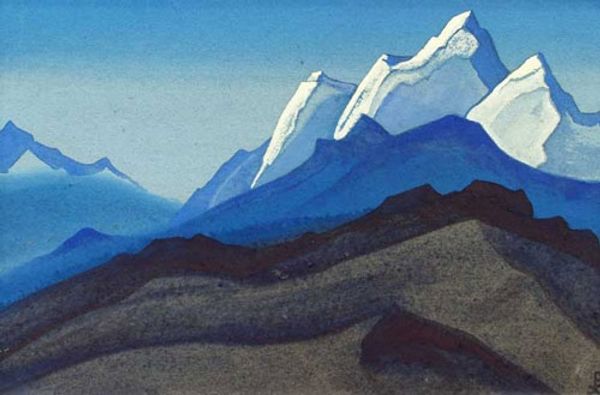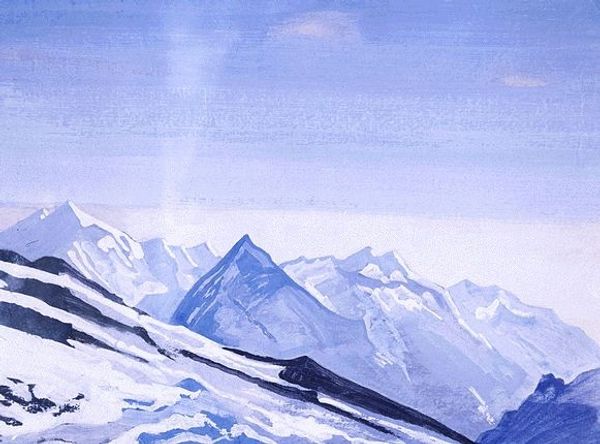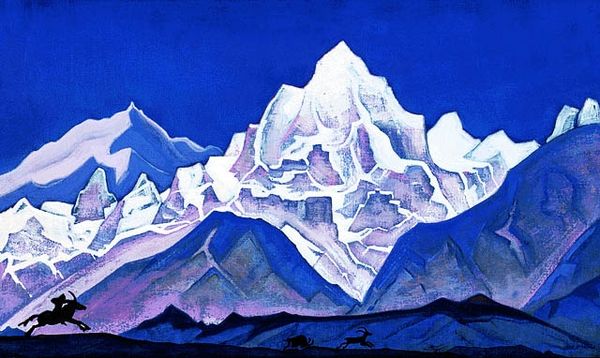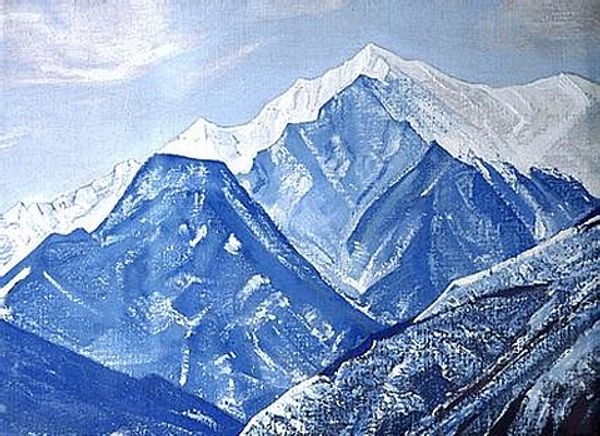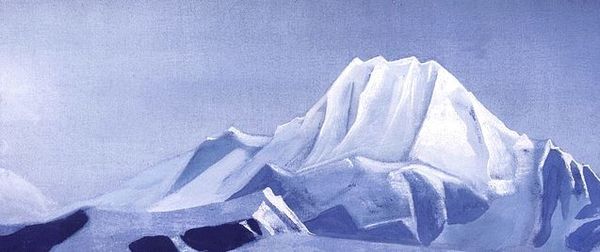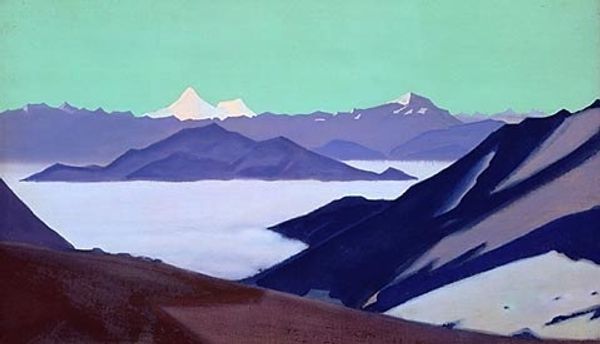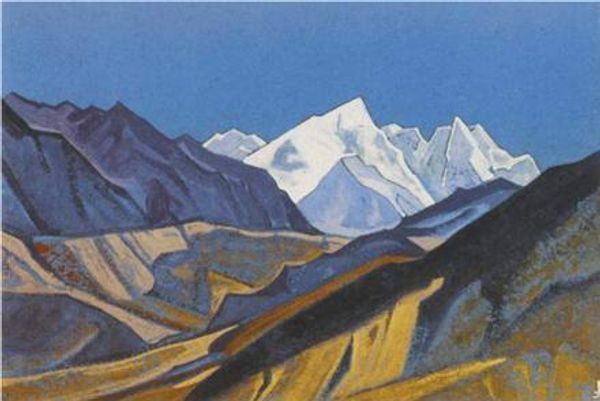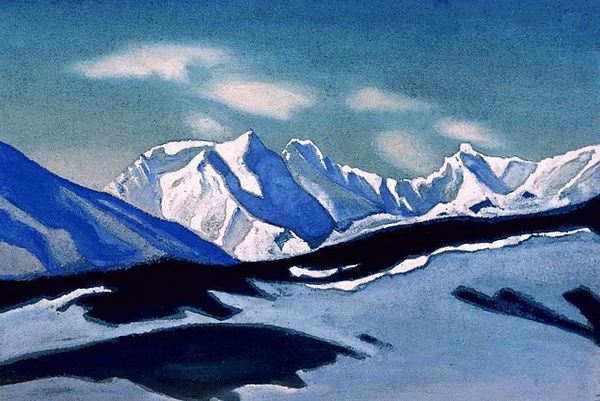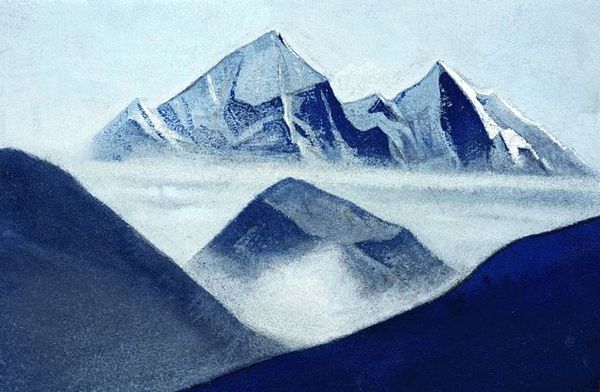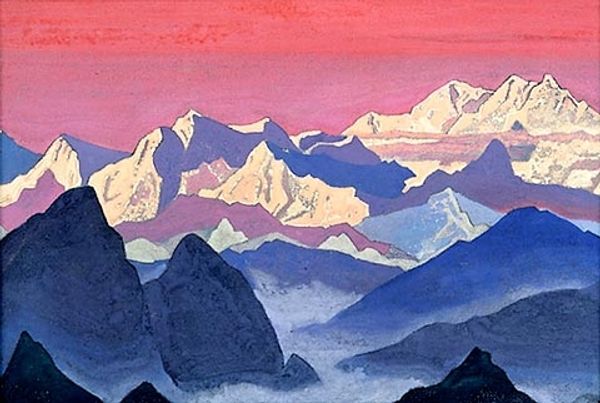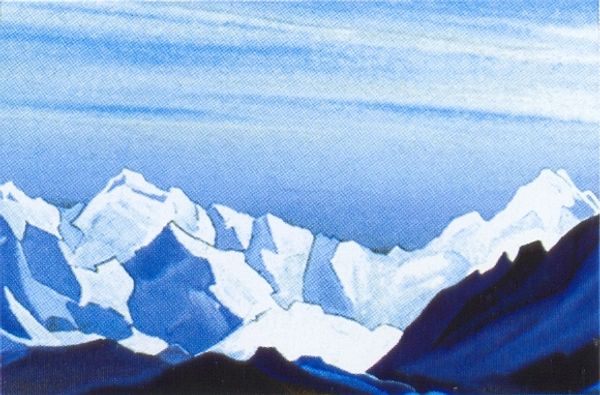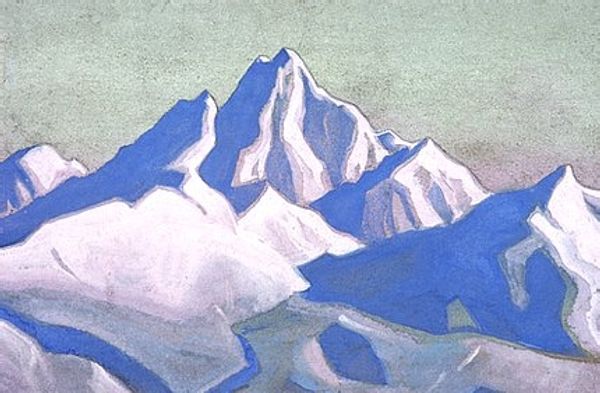
Copyright: Public domain
Editor: This is Nicholas Roerich's "Temple in Naggar" from 1929, painted with tempera and oil. It evokes a feeling of serene isolation with that small temple nestled beneath the massive, snow-capped mountains. The color palette is so cool and calming. What's your interpretation of it? Curator: Well, considering Roerich's background and interests, this work presents several layers beyond a simple landscape. Roerich was deeply involved with Theosophy and Eastern philosophies, particularly Buddhism. Doesn't the temple, depicted almost defensively below the vast mountains, speak to the fragility of human construction against the timeless power of nature? How does the painting relate to ideas around institutional power versus individual spirituality? Editor: I see what you mean! The positioning *does* make the temple look almost vulnerable, but it's also bathed in the same light as the mountains, almost like they are in harmony? Curator: Exactly! Roerich’s paintings often served as vehicles for promoting cultural preservation and spiritual seeking, aligning with the Roerich Pact, an international treaty for the protection of cultural institutions in times of peace and war. How might this painting function as a visual argument for the Pact's principles, advocating for the safeguarding of cultural heritage against larger socio-political forces? Editor: Wow, I hadn’t considered the Roerich Pact! So the painting is not just about the landscape, but about advocating for protection of cultural sites. Curator: Precisely. Roerich intertwines artistic expression with political and philosophical convictions. The temple isn't merely a structure but a symbol laden with historical and ethical weight. It really makes you consider the function of art and visual representation in advancing socio-political goals. Editor: I will definitely look at his works with fresh eyes, now realizing they’re more than just aesthetically pleasing landscapes. It’s interesting to consider how artists like Roerich used their art as a political voice.
Comments
No comments
Be the first to comment and join the conversation on the ultimate creative platform.
